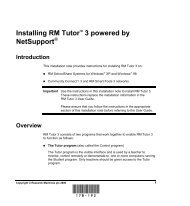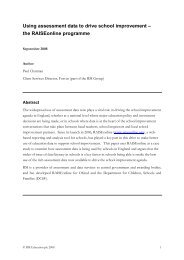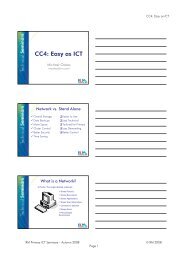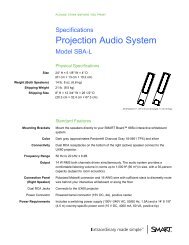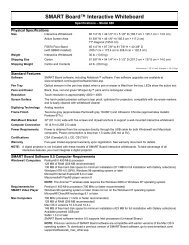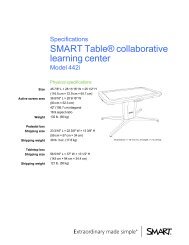Science Content Guide - RM.com
Science Content Guide - RM.com
Science Content Guide - RM.com
Create successful ePaper yourself
Turn your PDF publications into a flip-book with our unique Google optimized e-Paper software.
Chemistry<br />
Ionic bonding<br />
Objectives:<br />
• Explain that atoms <strong>com</strong>bine to achieve <strong>com</strong>plete outer electron<br />
shells like the nearest noble gas<br />
• Explain how the transfer of electrons from metal atoms to nonmetal<br />
atoms leads to the formation of positive and negative ions<br />
• Explain that ionic bonding between oppositely charged ions<br />
leads to the formation a giant lattice of ions in an ionic crystal<br />
Description<br />
Uses animations to explore the bonding and structure in simple 1:1 ionic <strong>com</strong>pounds, starting with<br />
the transfer of electrons between atoms and progressing to a three-dimensional ionic lattice.<br />
Duration (lesson alone, without ac<strong>com</strong>panying worksheet): 20 minutes<br />
Topic: Chemical bonding<br />
Separating crude oil<br />
Objectives:<br />
• Explain that crude oil is a mix of substances, that methane is the<br />
simplest hydrocarbon, and that hydrocarbons consist of differing<br />
numbers of carbon and hydrogen atoms<br />
• Outline how a fractionating tower works and what it produces<br />
• Explain trends in hydrocarbon properties and how these<br />
determine the different uses of hydrocarbons<br />
Description<br />
Uses an animation and interactive model to show the industrial separation of crude oil. Fractions can<br />
be selected and their properties explored.<br />
Duration (lesson and worksheet together): 50 minutes<br />
Topic: Products from crude oil<br />
Investigating hydrocarbons<br />
Objectives:<br />
• Systematically name the alkanes and alkenes, state their general<br />
formulae, describe the trend in their boiling points, and describe<br />
the regularity of their other properties<br />
• State that the presence of the C=C bond is the essential<br />
difference between the structures of alkanes and alkenes<br />
• State the uses of the alkanes and alkenes<br />
Description<br />
This lesson examines the physical properties of the alkanes and alkenes, and the trends exhibited by<br />
these properties. Substances can be displayed and <strong>com</strong>pared as diagrams or 3-D models.<br />
Duration (lesson and worksheet together): 50 minutes<br />
Topic: Products from crude oil<br />
2–10 Multimedia <strong>Science</strong> School






